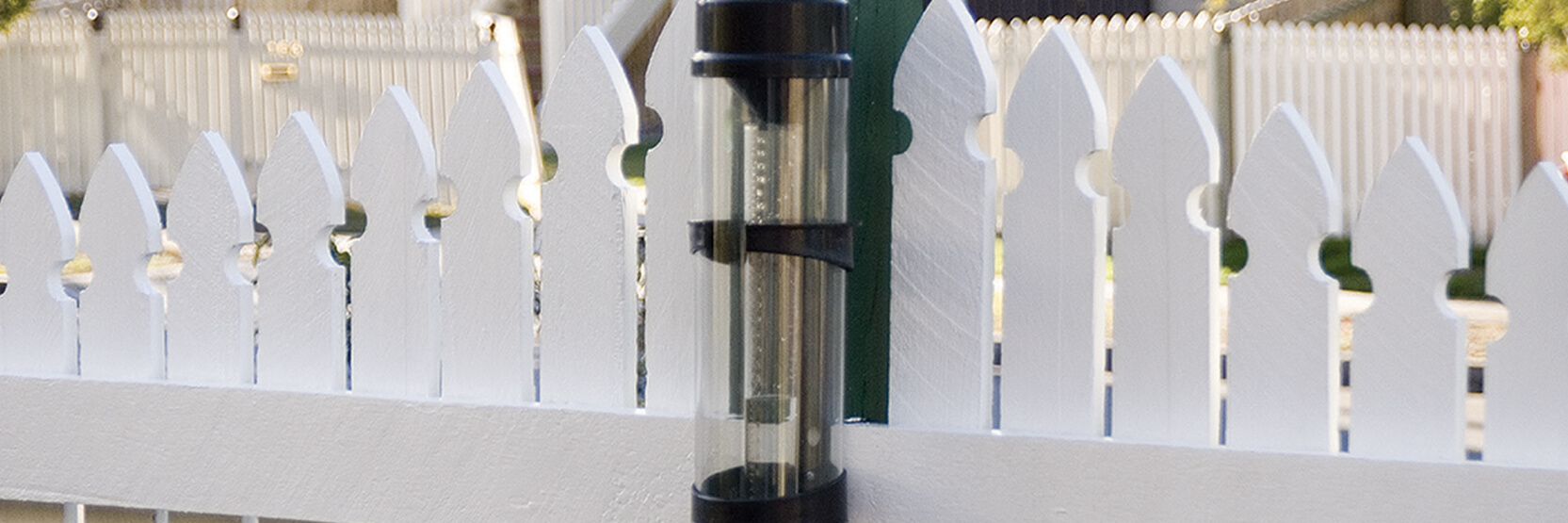Rain gauges play an important part in water conservation. They provide the ability to determine how much extra water an area actually needs to supplement rainfall avoiding over-watering. They measure rainfall in millimetres over a set period (usually 24 hours) which can then be recorded on a rainfall recording chart.
Neta Rain Gauges have large openings to catch a larger surface area of rainfall and have easy-to-read increments. They are available in 150 mm & 250 mm models, are easy to install and include a rainfall recording chart. Each rain gauge suits different budgets and levels of expertise.
Recording your rainfall using the Backyard Rain Gauge
The Backyard Rain Gauge is tapered therefore perfect for the accurate measuring of low rainfall thanks to its wedge-shaped body. It can measure up to 150 mm of rainfall.
A few considerations:
- It is important to record results of the rain gauge at the same time every day.
- Water in the container will produce a curved surface, called a ‘meniscus’. Always take the reading from the base of the meniscus and at eye level.
- For more accurate results, install rain gauges in pairs at six meter spacings and record the average of the gauges. This reduces the effect of strong winds on your results.
- A rainfall chart is included for recording your results and additional copies can be found at netagarden.com if need be.
Recording your rainfall using the Professional Rain Gauge
The Professional Rain Gauge has a large capacity and can measure up to 250 mm of rainfall. It has a small diameter inner cylinder for accuracy and a large outer cylinder for increased capacity. It comes supplied with stainless steel screws and a rainfall chart. It can be removed from its bracket allowing a closer look at the measurements.
A few considerations:
- Again, record results of the rain gauge at the same time every day.
- If you only have rainfall in your inner cylinder, simply measure the water in the rain gauge by removing the inner cylinder and recording it on your rainfall chart.
- Where rainfall has been extra heavy and has overflowed into the outer cylinder, measure the water in the inner cylinder, record the amount on a separate piece of paper and empty the gauge. Then take the rain contained in the outer cylinder and pour into the inner cylinder, measure and add the measurements from the inner and outer tubes together, record the total amount on the rainfall chart.
Installation
Installation is extremely easy. Simply attach the Rain Gauge to a post in a safe location where there will be no run-off from trees or roofs. The minimum distance needs to be at least twice the distance away from the tallest structure. For best results, make sure the gauge is straight and vertical, and located as close to the ground as possible.
For more accurate results, install rain gauges in pairs at six meter spacings and record the average of the gauges. This reduces the effect of strong winds on your results.
Looking at nature as a guide, 10 mm of rainfall is considered good for the garden in most areas. Rainfall of 10 mm is equivalent to 10 litres of water spread evenly over a square metre of garden.
